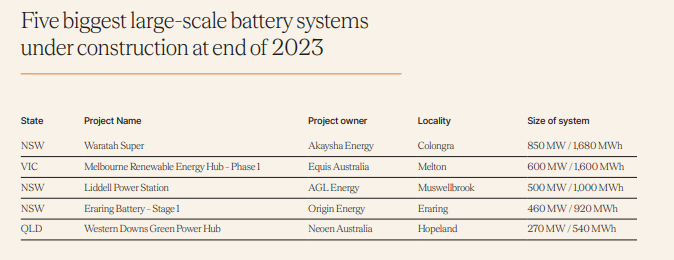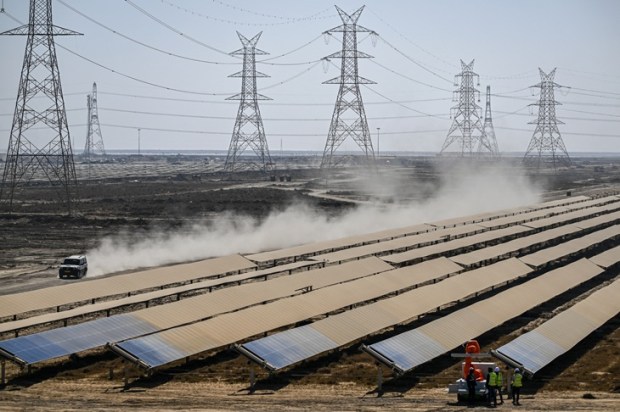‘The illusory truth effect (also known as the illusion of truth effect, validity effect, truth effect, or the reiteration effect) is the tendency to believe false information to be correct after repeated exposure.’ – Wikipedia, the free encyclopedia.
In plain English, if you repeat a lie often enough, most people will eventually accept it as the truth. Here are a few you may have heard.
‘Renewables are the cheapest form of energy.’ ‘Nuclear energy is up to six times more expensive than renewable energy.’
It is too difficult for the average voter to fact-check these statements, so they are accepted as truth with a bit of help from the media.
Recently, however, the media have begun to add the words ‘and batteries’ when reporting on new renewable energy developments. No fanfare, they just slip it in!
Battery storage units, which are used to maintain supply when the wind isn’t blowing or the sun isn’t shining, are a critical part of the renewable energy industry. They are used to balance the grid and cover the gaps during wind droughts, storms, hail damage, fire, cyclones, or mechanical failure.
There is a plan for OECD countries to cease all coal-fired electricity generation by 2030 or 2040 at the latest. The push to increase renewables seven-fold between 2023 and 2050 is on in spades.

SOURCE – CLEAN ENERGY COUNCIL AUSTRALIA
Proponents of the ‘Climate Crisis’ have recently realised that the closure of coal and gas generation equipment is likely to lead to an unstable energy grid, intermittent power, and potential blackouts. To alleviate this problem, there is a concerted effort to encourage investment in ‘The Big Battery’. Within this battery world, there are currently around 30 projects in operation or under construction. These projects will, when completed, provide 5 Gigawatts of clean power for a total of two hours without a recharge.
Australia’s East Coast peak daily power consumption is currently around 65 Gigawatts.
Yes, 65 Gigawatts, not 5 Gigawatts…
Inferred, but not said, is the desire to aim for battery storage equal to 65 Gigawatts so that it can replace the current coal and gas-fired generators. The trouble is, the current predictions (with no gas or coal, and charging 15 million EVs) are for our power usage to increase to over 160 Gigawatts by 2050.
In February of this year, in Victoria, six high-voltage power line towers were brought down by a storm with 120 km/hour winds. 500,000 homes were left without power. This continued for many days. Once isolated, extra power was brought online to replace the loss. This extra power was mainly sourced from interstate gas and coal generators.
Consider these facts:
- Commercial solar panels are less than 20 per cent efficient on an annual basis. Their usable lifespan is 20 years.
- A wind turbine (onshore) is around 30 per cent efficient on an annual basis. Their usable lifespan is 25 years. Wind tolerance of more than 12 km/hour and less than 90 km/hour. Ideal 60 km/hour.
- A big battery capable of storing and supplying 700 Megawatts for two hours is currently costs around $1.1 billion to build with a lifespan of 15 years.
- A big battery capable of grid supply for a day, or even longer (say 4-5 days) has not been invented yet.
- A nuclear generator (Example – APR1400, four built in UAE) can produce 1,400 Megawatts of clean power 24 hours per day for over 80 years with an annual efficiency of over 95 per cent. The cost of this generator is $9.5 billion.
- A big battery capable of storing/delivering 1,400 Megawatts of continuous power for five days is estimated to cost $168 billion – if it could be built!
To compete with a nuclear reactor, over an 80-year period wind and solar would be replaced four times for (solar) and three and a half times for (wind), at the then current day costs.
The batteries would need to be replaced every 15 years, which is over five times in the same period. This is the most expensive item of a green energy transition.
Compare a 1,400 Megawatt wind and solar system, and batteries, with a nuclear generator, over 20 years.
Total asset cost for renewables is $232.25 billion.
Total asset cost for nuclear is $2.375 billion.
When you take into account all these additional factors, renewables are a trillion dollar disaster.
In the commercial world, all assets are amortised over their expected life-span. No board of directors would approve the above costs (some unknown) without calling for an extensive cost/analysis together with a ‘return on investment’ projection.
If it was their money, rather than ours, the entire project would be thrown out as nothing more than an illusion.
David Gardner, MTG Group. Senior Vice President – communications

























